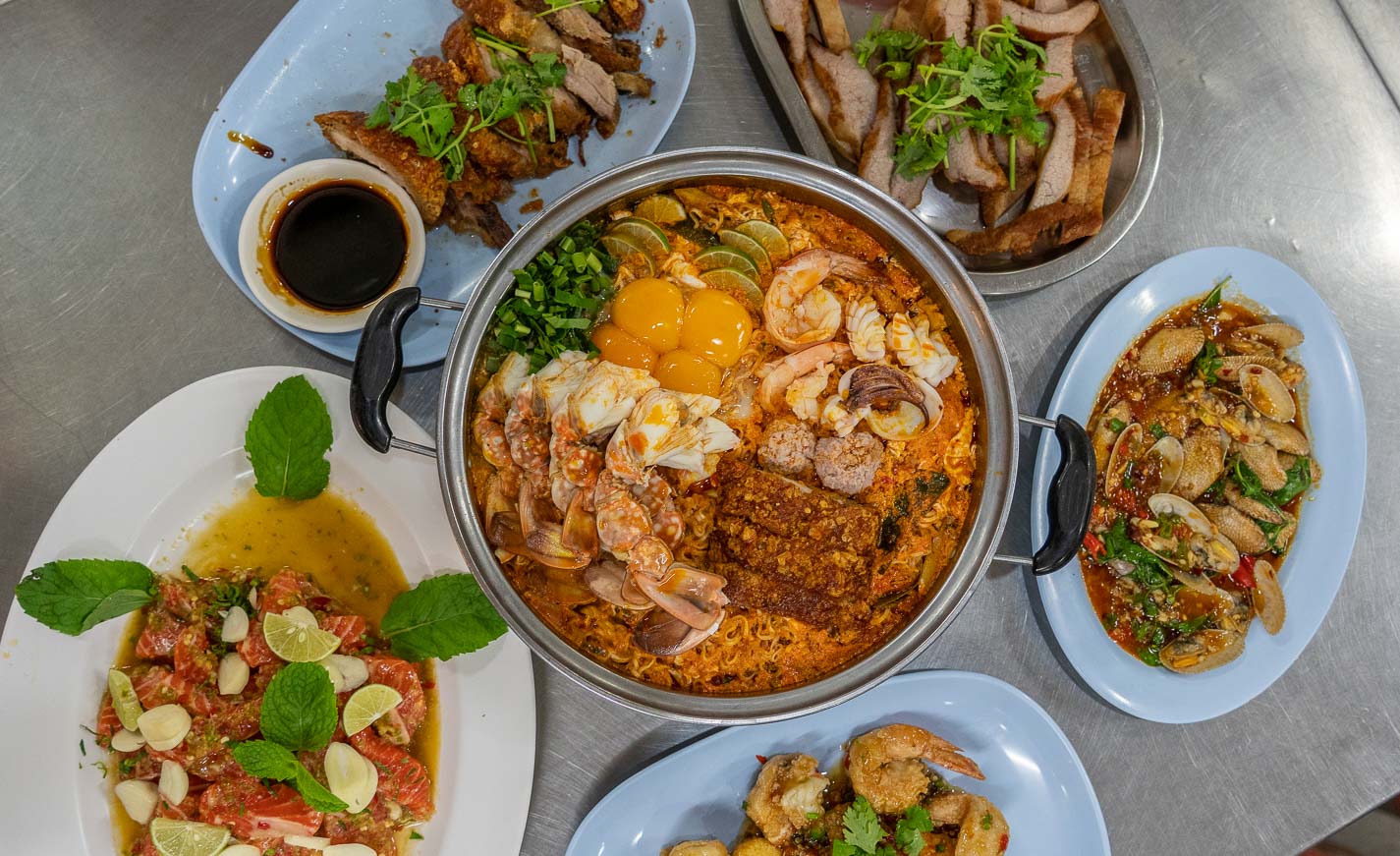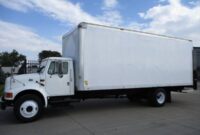Food Service Truck Bodies: The Backbone of Mobile Gastronomy pickup.truckstrend.com
In an era defined by convenience, innovation, and diverse culinary experiences, the mobile food industry has exploded, transforming everything from street corners to corporate events. At the heart of this dynamic sector lies a critical, often overlooked, component: the Food Service Truck Body. More than just a simple box on wheels, these specialized bodies are meticulously designed and engineered environments that enable businesses to transport, prepare, and serve food safely, efficiently, and effectively, regardless of location. From temperature-controlled delivery vehicles to fully equipped mobile kitchens, food service truck bodies are the unsung heroes facilitating a revolution in how we eat.
Understanding the intricacies of these bodies is paramount for anyone looking to enter or expand within the mobile food sector. They represent a significant investment, a vital operational asset, and a powerful marketing tool. This comprehensive guide will delve into the world of food service truck bodies, exploring their types, essential features, benefits, crucial considerations, and more, offering practical insights for informed decision-making.
Food Service Truck Bodies: The Backbone of Mobile Gastronomy
The Foundation: What are Food Service Truck Bodies?
A food service truck body is a custom-built or modified enclosure mounted onto a truck chassis, specifically designed for the handling, storage, transportation, and sometimes preparation of food products. Unlike standard cargo trucks, these bodies incorporate specialized features to meet stringent health, safety, and operational requirements unique to the food industry. Their purpose ranges from maintaining specific temperatures for perishable goods to housing entire commercial kitchens on the go, making them indispensable for catering companies, food distributors, mobile restaurants, and pop-up eateries.
The evolution of these bodies mirrors the growth of the mobile food industry itself. What began as simple insulated boxes has transformed into sophisticated, multi-functional units capable of supporting complex culinary operations, reflecting advancements in materials, refrigeration technology, and design ergonomics.
Types of Food Service Truck Bodies
The diverse needs of the food service industry have led to the development of various specialized truck body types, each tailored for specific functions:
- Dry Storage Bodies: These are the most basic, designed for transporting non-perishable goods, packaged foods, and general supplies that do not require temperature control. They often feature sturdy shelving, secure latching mechanisms, and durable interior finishes.
- Refrigerated/Freezer Bodies (Reefers): Crucial for businesses dealing with perishable goods like fresh produce, dairy, meats, or frozen products. These bodies are heavily insulated and equipped with powerful refrigeration units capable of maintaining precise temperatures, from chilled to deep-freeze. Advanced models may feature multi-temperature zones.
- Heated Bodies: Less common but essential for delivering prepared hot meals, such as for large-scale catering events or meal delivery services. They utilize insulated compartments with heating elements to keep food at safe serving temperatures.
- Combination Bodies: Offering versatility, these bodies integrate multiple temperature zones (e.g., dry, refrigerated, and freezer sections) within a single unit. This allows businesses to transport a variety of products with different temperature requirements simultaneously, optimizing logistics.
- Specialized Mobile Kitchen Bodies (Food Trucks): Perhaps the most recognizable, these are complete, self-contained kitchens on wheels. They are custom-built to house commercial-grade cooking equipment (grills, fryers, ovens), prep stations, refrigeration, ventilation systems, water tanks, and serving windows. They are designed for on-site food preparation and direct customer sales.
- Catering & Concession Bodies: Similar to food trucks but often focused more on prep and serving rather than full cooking. They might feature large counter spaces, display cases, coffee machines, and storage for prepared dishes, ideal for events, festivals, or corporate catering.
- Mobile Commissary Bodies: Used by food truck operators or small catering businesses that lack a permanent kitchen. These bodies are equipped to receive, store, and distribute ingredients, and sometimes to perform basic prep or dishwashing, serving as a hub for multiple mobile units.


Key Features and Components for Optimal Performance
The effectiveness of a food service truck body hinges on its specialized features, each contributing to hygiene, efficiency, and safety:
- Insulation: The backbone of temperature-controlled bodies. High R-value insulation (e.g., rigid foam, polyurethane) in walls, ceilings, and floors is critical for maintaining consistent temperatures and reducing energy consumption for refrigeration/heating units.
- Flooring: Must be non-slip, durable, waterproof, and easy to clean to prevent accidents and ensure sanitation. Materials like aluminum tread plate, fiberglass reinforced plastic (FRP), or seamless epoxy coatings are common. Drainage systems are also vital for mobile kitchens.
- Shelving & Storage Solutions: Adjustable, sturdy, and hygienic shelving (often stainless steel or aluminum) is essential for organizing ingredients, supplies, and equipment securely during transit. Custom configurations maximize space utilization.
- Power Systems: Mobile operations demand robust power. Options include quiet generators (propane, diesel), inverters connected to battery banks, and shore power connections for when the truck is parked. Adequate electrical outlets and wiring are paramount for appliances.
- HVAC & Ventilation: For mobile kitchens, powerful exhaust hoods and ventilation systems are mandatory to remove smoke, grease, and heat, ensuring a comfortable and safe working environment. Air conditioning is also crucial for staff comfort, especially in hot climates.
- Water Systems: Food trucks and catering bodies require fresh water tanks for cooking and handwashing, and greywater/wastewater tanks for disposal. Pressurized water pumps and water heaters are standard for hygiene compliance.
- Sanitation & Hygiene: Integrated handwashing stations, three-compartment sinks (for washing, rinsing, sanitizing utensils), easy-to-clean surfaces (stainless steel, FRP), and seamless construction are critical for meeting health department regulations.
- Access Points: Roll-up doors, side doors, swing-out rear doors, and serving windows are designed for efficient loading, unloading, and customer interaction while maintaining security.
- Lighting: Bright, energy-efficient LED lighting inside the body ensures clear visibility for food preparation and handling. Exterior lighting can enhance safety and visibility, especially for night operations.
- Safety Features: Fire suppression systems (especially for cooking equipment), first-aid kits, clearly marked exits, and non-slip surfaces are vital for operator safety.

Benefits of Investing in Specialized Food Service Truck Bodies
The investment in a purpose-built food service truck body yields numerous strategic advantages:
- Mobility & Market Reach: Break free from geographical constraints. Access new customer bases, participate in diverse events, and serve underserved areas that a brick-and-mortar location cannot.
- Operational Efficiency: Optimized layouts, specialized storage, and integrated systems streamline workflows, reduce prep time, and minimize spoilage, leading to higher productivity and profitability.
- Brand Building & Marketing: A custom-designed truck body acts as a powerful mobile billboard, offering unique branding opportunities and creating memorable customer experiences that stand out from competitors.
- Revenue Generation: Opens up new business models, from direct-to-consumer sales and catering gigs to participation in lucrative festivals and private events, diversifying income streams.
- Compliance & Food Safety: Designed from the ground up to meet stringent local, state, and federal health codes, ensuring food safety, reducing liability, and simplifying inspections.
- Cost-Effectiveness: While initial investment can be significant, mobile operations often have lower overheads (rent, utilities) compared to traditional restaurants, offering a faster return on investment and greater profit margins.
Important Considerations When Choosing and Customizing
Selecting the right food service truck body is a complex decision requiring careful planning:
- Business Needs Analysis: Define your menu, target volume, type of service (delivery, catering, on-site cooking), and specific equipment requirements. This dictates the body size, features, and layout.
- Chassis Compatibility: The truck body must be compatible with the chassis in terms of weight capacity (Gross Vehicle Weight Rating – GVWR), dimensions, and power take-off (PTO) capabilities if needed.
- Regulatory Compliance: Research and understand all local, state, and federal health department regulations, DOT requirements, and specific permits for mobile food operations in your target areas. This is non-negotiable.
- Materials & Durability: Invest in high-quality, food-grade materials (stainless steel, aluminum, FRP) that are durable, corrosion-resistant, easy to clean, and built to withstand the rigors of mobile operation. Longevity reduces long-term costs.
- Budget & ROI: Establish a realistic budget that includes the chassis, body, equipment, permits, and initial operating capital. Project your potential revenue and calculate your anticipated return on investment.
- Manufacturer Reputation & Customization Capabilities: Choose an experienced body builder with a proven track record in food service. Their ability to customize, quality of workmanship, warranty, and post-sale support are crucial.
- Accessibility & Ergonomics: Design the interior layout for efficient workflow, ease of access to equipment and supplies, and comfortable working conditions for staff. Consider serving window height and customer accessibility.
Maintenance and Longevity
Proper maintenance is key to extending the life of your food service truck body and ensuring continuous operation:
- Regular Cleaning: Adhere to strict daily cleaning protocols for all surfaces, equipment, and storage areas to maintain hygiene and prevent cross-contamination.
- Refrigeration Unit Checks: Regularly inspect and service refrigeration units, including checking refrigerant levels, cleaning coils, and ensuring proper airflow.
- Power System Maintenance: Schedule routine checks for generators, batteries, and electrical connections to prevent breakdowns.
- Body Integrity: Periodically inspect body panels, seals, doors, and windows for wear, damage, or leaks, addressing issues promptly to maintain insulation efficiency and prevent water intrusion.
- Preventative Maintenance: Follow manufacturer-recommended service schedules for all integrated systems and the truck chassis.
Practical Advice and Actionable Insights
- Start with a Detailed Business Plan: Before looking at trucks, define your concept, menu, target market, and operational model. This will directly inform your truck body specifications.
- Prioritize Health and Safety Compliance: This is the single most critical aspect. Work closely with your body builder and local health department to ensure your design meets all regulations before construction.
- Don’t Compromise on Insulation and Refrigeration: For any perishable goods, these are non-negotiable investments that prevent spoilage and ensure food safety.
- Invest in Durable, Easy-to-Clean Materials: While initial costs might be higher, materials like stainless steel and FRP will save you time and money on cleaning and maintenance in the long run.
- Work with Experienced Body Builders: Choose a company specializing in food service vehicles. Their expertise in design, materials, and regulatory compliance is invaluable.
- Consider Future Expansion: Design with some flexibility for potential menu changes or additional equipment if your business grows.
Food Service Truck Body: Illustrative Price Guide
The cost of a food service truck body varies significantly based on its type, size, level of customization, integrated equipment, and the manufacturer. The prices below are illustrative estimates in USD and do not include the truck chassis unless specified as a complete unit. These figures are subject to change due to market conditions, material costs, and specific design choices.
| Body Type | Key Features | Estimated Price Range (USD) | Notes/Factors Influencing Price



